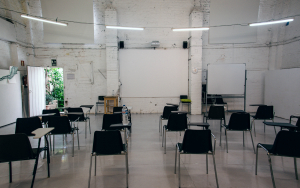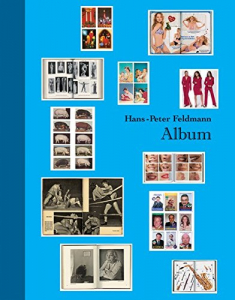An open mind behind closed doors – a recap on art studies during confinement
After a period of lockdown, Spain is now safely opening up its borders and Metàfora is
likewise opening its doors – and we are looking forward to once again welcome students
from all over the world to our great campus in Barcelona. For the time being we are getting ready for the new students who are joining the upcoming summer semester in July, and we are also running several art courses online.
As the city is moving towards the (new) normal, we find it important to take a moment to
reflect upon and share what we learned during this time of art teaching and art making
together – from home.
The problem and the potential – artistic thinking as a bridge over troubled waters
“Art is a function to solve problems. That is what art has been doing since the stone ages.” – Hans-Peter Feldmann
There might be some who will not completely agree with German artist Hans-Peter Feldmann’s statement above. Understandably so, since the role and function of art in society is a complex, ongoing and, most likely, never-ending debate.
What many artists probably do agree on though is that art creation and problem solving have quite some things in common. Both rely on the ability to reflect on a subject from another angle, come up with alternative solutions and bring about new ways of thinking. This, often unnoticed, connection between solving a problem and making art, finding a place of potential within a given problem, is something that the students as well as the teachers at Metàfora has experienced first hand during these last months.
The sky screen is the limit – from off campus to online
Due to the Covid-19 and the following confinement period, staff and students have worked on adapting to the changes that came along. The tutorials and workshops where reshaped into a digital format of online classes with live streaming, thus making it possible to continue lectures, debates and reviews of weekly assignments and individual student projects.
The problem of limitations regarding such things as space and materials provided the opportunity to rethink the approach of teaching, making, sharing and showing art in these (con)temporary circumstances. With suddenly having “the screen as the limit”, the students found ways to work with this new frame for presenting their art – and along this to reconsider questions around spectatorship, participation and the many alternative types of platforms that could be used in their art practice.
While bringing in the variety of video-, web- and photo related art forms for inspiration, we’ve also been looking back in art history as a means to “move forward” – adding to the courses examples from artists who didn’t necessarily use paint and pencils in their work or who realised their pieces in other settings than in a studio.
Less typical materials such as household products, food and beverages was included as possible elements for creating sculpture, installation and painting, while the body as a material in itself was investigated throughout the performance art workshop.
Back to normal – in a new way
What has come out of this difficult but also encouraging time of art studies during confinement have been highly inventive presentations with interesting works and engaged, reviving debates. So even though we are now all looking forward to go back to (new) normal, we still hope that each student will not just go back to normal in their studios, but that they will also have found “new normals” within their personal art practice.






